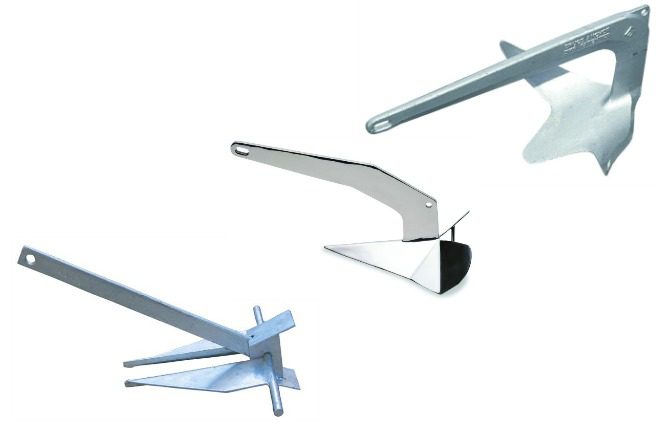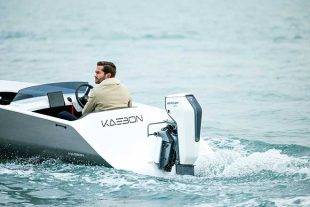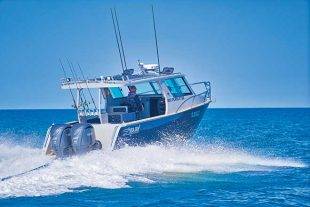ANCHORS play an important role when boating.
Many recreational fishers anchor up to fish. This may be at a known fishing spot, drop-off, weed bed or just dropping the anchor and hoping for the best (we’ve all done that a few times and on some occasions it pays off quite handsomely).
Many anchors are on the market. Following are three anchors that are quite commonly used.
Danforth
Danforth anchors are commonly known as sand anchors. Many boats without a drum anchor winch come with these anchors as standard. They are great multi-purpose anchors that work in many seabed terrains such as sand, weed, mud, rock and reef.
They range from 4lb to 100lb in weight and are generally made of galvanised steel. These anchors don’t normally suit drum winches because they don’t sit well in the bowsprit.
Benefits: Excellent for use on sandy, lightly silted and hard mud bottoms as well as clay, shells and rocks.
Drawbacks: Poor for anchoring on grass and deep mud or silt. Can tend to drag along these bottoms and not set in.



The Delta is the most popular anchor at Savwinch. Its thin arm allows the anchor to sit nicely in place on the bowsprit. The Delta can land on its side when dropped into the water but manages to bury itself when pulled.
If the wind or tides shift the boat’s position, the shape of the anchor helps the boat reset fairly. The shank geometry is designed to force the tip downwards while setting and thereby aids in a quicker set.
Benefits: High holding power on most bottoms; made of galvanised or stainless steel; strong one-piece construction; narrow cross-section shank for deep penetration.
Drawbacks: Not readily able to be set and reset in soft bottoms. Weighted point penetrates mud and hard sand bottoms but may not work efficiently on soft bottoms.
Bruce/claw
The multi-purpose Bruce or claw anchor is suitable for use with drum anchor winches. It is extremely effective on a variety of seabeds and works tremendously well by slowly turning at the bottom. The claw anchor performs well on boulder bottoms and also works with sand, mud and clay.
Benefits: Sets quickly on surfaces and resets after veering; usually long warranties; one-piece compact construction; remains stable under a range of tides and wind; roll stabilised.
Drawbacks: Has less holding power in mud or soft sand, hence preferred for use primarily on hard surfaces.
The team at Savwinch prefers to use the claw-style anchor. It’s a quick bottom-grabbing anchor. For those who use this type of anchor in reefy and rocky areas, it is recommended to set the anchor up in a breakaway system. This allows the anchor to be picked up from the nose rather than the arm, thereby reducing the risk of losing the anchor to the seabed when the anchor is stuck/reefed.
Always tie off to a bollard before driving over the anchor. For further information on which type of anchor best suits you, contact the team at Savwinch boat anchor winches on 03 8361 8841 or visit savwinch.com.au
 Bush 'n Beach Fishing Magazine Location reports & tips for fishing, boating, camping, kayaking, 4WDing in Queensland and Northern NSW
Bush 'n Beach Fishing Magazine Location reports & tips for fishing, boating, camping, kayaking, 4WDing in Queensland and Northern NSW









Re anchors- I prefer the sarca type anchor with the slotted arm, makes thing easy no rigging break a ways just motor up on anchor and the shackle slides up the slotted arm all owing the anchor to be easily raised without snagging